ULTIMATE Adam Fuss From the series 'My Ghost' 2001 Unique gelatin silver print, mounted to muslin. Image/Sheet: 223.9 x 140.5 cm (88 1/8 x 55 3/8 in.) Frame: 233.9 x 150.5 cm (92 1/8 x 59 1/4 in.) Signed, dated and numbered 'AF 3004' in wax pencil on an artist label affixed to the reverse of the frame. This work is a unique photogram.
Provenance Xavier Hufkens, Brussels Catalogue Essay In this edition of ULTIMATE, we are thrilled to present two unique large-scale photograms by internationally acclaimed artist Adam Fuss From the series ‘My Ghost’, 2001, is an exceptional example of his photograms of smoke, all created between 1999 and 2001. While his smoke works were made during a limited period of time, Untitled, 2007, is part of an ongoing exploration of water, which began in the mid-1980s and continues with his most recent photographic work. Phillips’ Yuka Yamaji and Adam Fuss discussed beginnings, making photograms and what’s next for him. Camera-Less Photography Yuka Yamaji: We are seeing a renewed interest in 19th century photography and its processes and how they inform contemporary photography. How did you first discover camera-less photography? Adam Fuss One of my high school teachers proposed that the quality of one’s photographic equipment was irrelevant because it would be possible to make the best images in the world with a pinhole camera. He was responding to my insecurity around my photographic equipment. I took up his idea by experimenting with the pinhole camera about five years later and these experiments led me into the possibilities of camera-less photography. YY: How did you create your first photogram? AF: My first photogram I made by accident. YY: By accident? Were you trying to make something else? AF: I was trying to make a pinhole image of … well I don’t know what it was … it was either the Lincoln Memorial or the White House or the Washington Monument. I took my pinhole camera to Washington to distort, with the ultra-wide angle perspective, some of the iconic places and I failed to uncover the pinhole for one of the pictures. But there was a hole in my cardboard box camera in a corner so some light played across the surface of a piece of colour film. And the cardboard box was deteriorating and some of the dust, the cardboard dust, had fallen on the film. So the light leaked, exposed that dust and made a photogram of that dust. YY: Wow. Where is this photogram of dust? AF: Well, it’s a sheet of 8 x 10 Ektachrome and it’s in a box in my studio. YY: And when you were first discovering cameraless photography were you looking back to 19th century photogenic drawings by Talbot or Anna Atkin’s cyanotypes? AF: Not at all. I had no knowledge of photographic history whatsoever. I had no knowledge of early photographs. My interests and my experiments were not at all informed by photographic history. YY: Interesting. So at what point did you become familiar with 19th century photography? AF: I’m going to say a few years later because I started looking more and more at photographic history. YY: And did that influence you in any way? AF: I don’t think so. I don’t think it had any influence. I did play a little bit with salt prints and that was out of learning about Talbot’s sensitising technique, but I feel that I tended to avoid images that I’d already seen. YY: What for you is the key difference between photographs made with and without a camera? AF: The camera-less image is more intimate … it’s made, not taken … the outside world is not involved. I feel a photogram has much more intimacy and feeling than a camera-based photograph. Smoke YY: Let’s talk about your first work in the sale. You created this photogram of smoke in 2001 as part of your series My Ghost. What led you to the subject of smoke? AF: It’s very hard to say where something begins because there always seems to be a stage before the identified beginning. YY: I remember you telling me that you were in West Sussex when you had the idea of making a photogram of smoke. AF: For quite a few years I stayed in a caravan, in a clearing in the woods, and I would cook on an open fire and at some point I had an idea that I could make a photogram of smoke. And the material of smoke seemed to match similar themes to the body of work that I call My Ghost. And so I borrowed some photographic
ULTIMATE Adam Fuss From the series 'My Ghost' 2001 Unique gelatin silver print, mounted to muslin. Image/Sheet: 223.9 x 140.5 cm (88 1/8 x 55 3/8 in.) Frame: 233.9 x 150.5 cm (92 1/8 x 59 1/4 in.) Signed, dated and numbered 'AF 3004' in wax pencil on an artist label affixed to the reverse of the frame. This work is a unique photogram.
Provenance Xavier Hufkens, Brussels Catalogue Essay In this edition of ULTIMATE, we are thrilled to present two unique large-scale photograms by internationally acclaimed artist Adam Fuss From the series ‘My Ghost’, 2001, is an exceptional example of his photograms of smoke, all created between 1999 and 2001. While his smoke works were made during a limited period of time, Untitled, 2007, is part of an ongoing exploration of water, which began in the mid-1980s and continues with his most recent photographic work. Phillips’ Yuka Yamaji and Adam Fuss discussed beginnings, making photograms and what’s next for him. Camera-Less Photography Yuka Yamaji: We are seeing a renewed interest in 19th century photography and its processes and how they inform contemporary photography. How did you first discover camera-less photography? Adam Fuss One of my high school teachers proposed that the quality of one’s photographic equipment was irrelevant because it would be possible to make the best images in the world with a pinhole camera. He was responding to my insecurity around my photographic equipment. I took up his idea by experimenting with the pinhole camera about five years later and these experiments led me into the possibilities of camera-less photography. YY: How did you create your first photogram? AF: My first photogram I made by accident. YY: By accident? Were you trying to make something else? AF: I was trying to make a pinhole image of … well I don’t know what it was … it was either the Lincoln Memorial or the White House or the Washington Monument. I took my pinhole camera to Washington to distort, with the ultra-wide angle perspective, some of the iconic places and I failed to uncover the pinhole for one of the pictures. But there was a hole in my cardboard box camera in a corner so some light played across the surface of a piece of colour film. And the cardboard box was deteriorating and some of the dust, the cardboard dust, had fallen on the film. So the light leaked, exposed that dust and made a photogram of that dust. YY: Wow. Where is this photogram of dust? AF: Well, it’s a sheet of 8 x 10 Ektachrome and it’s in a box in my studio. YY: And when you were first discovering cameraless photography were you looking back to 19th century photogenic drawings by Talbot or Anna Atkin’s cyanotypes? AF: Not at all. I had no knowledge of photographic history whatsoever. I had no knowledge of early photographs. My interests and my experiments were not at all informed by photographic history. YY: Interesting. So at what point did you become familiar with 19th century photography? AF: I’m going to say a few years later because I started looking more and more at photographic history. YY: And did that influence you in any way? AF: I don’t think so. I don’t think it had any influence. I did play a little bit with salt prints and that was out of learning about Talbot’s sensitising technique, but I feel that I tended to avoid images that I’d already seen. YY: What for you is the key difference between photographs made with and without a camera? AF: The camera-less image is more intimate … it’s made, not taken … the outside world is not involved. I feel a photogram has much more intimacy and feeling than a camera-based photograph. Smoke YY: Let’s talk about your first work in the sale. You created this photogram of smoke in 2001 as part of your series My Ghost. What led you to the subject of smoke? AF: It’s very hard to say where something begins because there always seems to be a stage before the identified beginning. YY: I remember you telling me that you were in West Sussex when you had the idea of making a photogram of smoke. AF: For quite a few years I stayed in a caravan, in a clearing in the woods, and I would cook on an open fire and at some point I had an idea that I could make a photogram of smoke. And the material of smoke seemed to match similar themes to the body of work that I call My Ghost. And so I borrowed some photographic
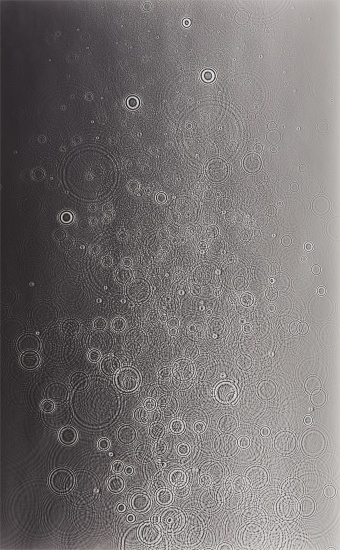
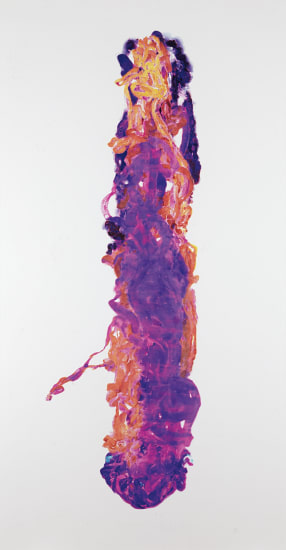
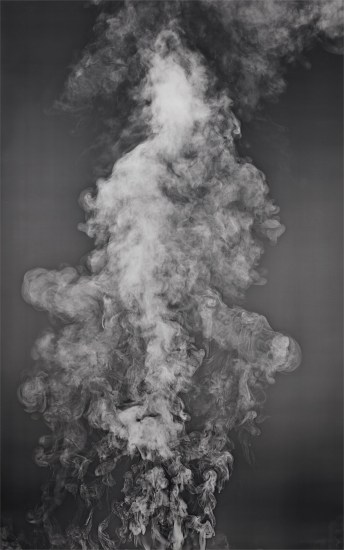
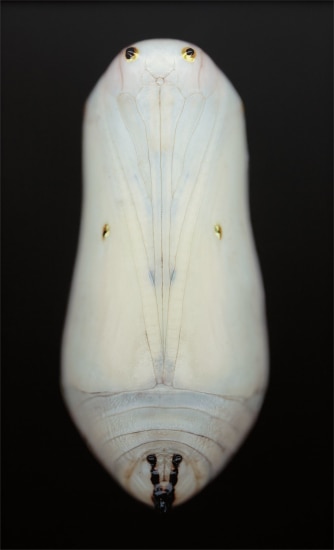

.jpg)
.jpg)
.jpg)

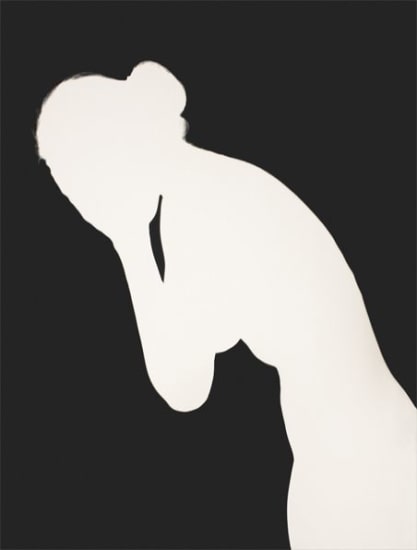




Try LotSearch and its premium features for 7 days - without any costs!
Be notified automatically about new items in upcoming auctions.
Create an alert